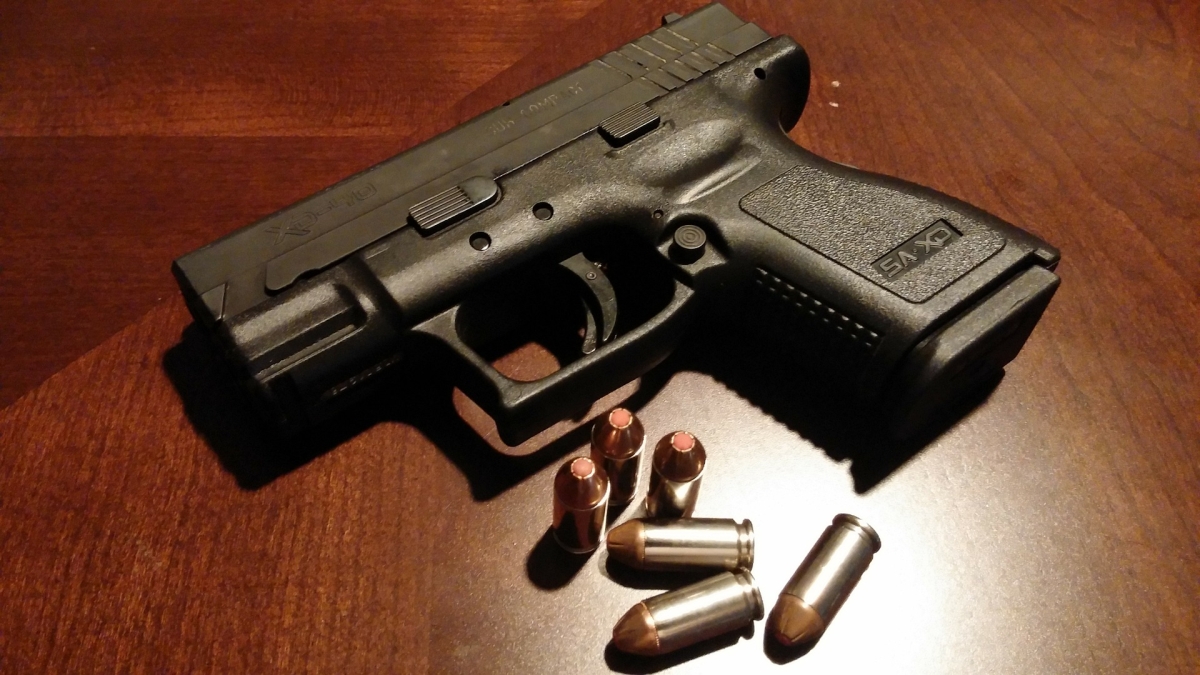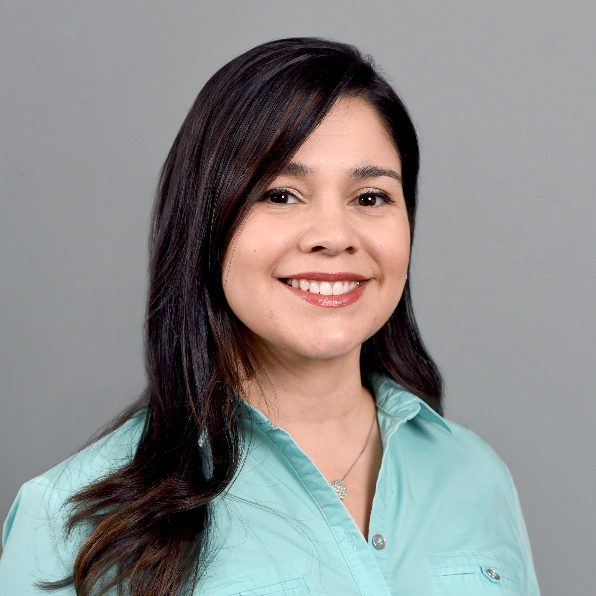Firearms are the second leading cause of death behind vehicle crashes for young people in the U.S., and gun deaths among people age 19 and younger have skyrocketed 44% since 2013, according to the U.S. Centers for Disease Control and Prevention.
But research into factors around firearm deaths and injuries has lagged, including how they could be prevented and who is most at risk.
Now, a group of 25 nationwide experts — including an Arizona State University professor — has collaborated to create a list of 26 topics that are most important for researchers to answer. They spent a year on the project, and their report was released last week and published in JAMA Pediatrics.
“As a criminologist and social scientist, you always want to do something that will matter and save lives,” said Jesenia Pizarro-Terrill, an associate professor in the School of Criminology and Criminal Justice who studies urban violence. “This is a public health crisis, and it makes no sense in a country like ours that children are dying because of this.”
Pizarro-Terrill is a member of the Firearm Safety Among Children and Teens Consortium, known as FACTS, a team of 25 scientists from 12 universities that is funded by the National Institute for Child Health and Human Development.
The priority research topics they selected vary from the most basic question, such how children get access to firearms, to policy issues, such as how to better use data analysis. Other questions include:
- What explains racial disparities in firearm injuries and deaths?
- How effective are school-based programs for reducing firearm suicide risk?
- How do media and social media affect firearm outcomes?
- Does “smart” firearm technology decreases firearm injury and death?
- How can police best partner with community groups on anti-violence programs?
Jesenia Pizarro-Terrill
The journal articles notes, “Currently, there is a substantial deficit of data for pediatric firearm injuries.” That’s because in 1996, Congress passed the Dickey Amendment, which prohibits the use of federal funds to advocate or promote gun control, and that deterred money targeted for research. Inquiry into firearm-injury prevention waned. But in 2018, the federal budget bill clarified that the amendment does not prohibit federal funding of research on the causes of gun violence. The new list of priorities is meant to be a road map as research funding begins to flow again.
The process of creating the list of questions was intense, Pizarro-Terrill said.
“At first it was a little intimidating because these are the leading experts in the field of injury prevention and firearms, and you’re seeing people whose work you read in grad school,” she said.
Every scientist was asked to consider the most pressing research issues they could think of in their own area of expertise. Then the team divided into groups and did a massive review of thousands of existing studies.
“There’s good stuff out there, but a lot of it is 20 or 30 years old,” she said. “We wondered, ‘Does it still hold up in this context?’”
After the literature review, there were more discussions and several rounds of voting. The final research agenda included questions that 70% of the experts agreed on.
Pizarro-Terrill is interested in finding out about protective factors.
“We talk a lot about risk, but not everybody who has a firearm becomes a victim or a perpetrator,” she said. “What serves to protect that individual, even one who is exposed on a daily basis?”
One important part of the process was input by community stakeholders representing schools, police, churches, veterans, gun owners and health care providers. One of them was Geraldine Hills, founder of Arizonans for Gun Safety.
“As someone who’s been doing grassroots work for almost 24 years now, they wanted to know our experience with survivors and what areas we thought needed research in order to develop policy going forward,” she said.
“We were that bridge between practice and academia,” said Hills, who founded Arizonans for Gun Safety after her brother, a police officer, was shot to death in 1994. She is president of the group, which she said approaches gun policy from a public-health framework.
“We talk about safe storage, and we hand out trigger locks. We talk about being responsible gun owners, and not leaving guns in your car or unlocked where criminals can get them. We do a lot of public safety campaigns.”
Her group was instrumental in getting Shannon’s Law passed, the statute that makes it a felony to shoot guns randomly into the air, named for Shannon Smith, a 14-year-old Phoenix girl killed by a stray bullet in 1999. The law passed in 2000 after failing twice in 1999.
“Getting (firearms) bills passed is so difficult that we want to be able to make sure the policies we’re putting forward are research-based solutions to reduce gun deaths and injuries,” said Hills, who earned a master’s degree of nonprofit administration from ASU in 2015.
“There have been bills passed that aren’t as effective as we had hoped because we were guessing that they would have an impact. Now that research is finally being done again, we can say, ‘Here are the places we can change policy to have the greatest impact.’”
One foundation of the FACTS team’s mission was the acknowledgement that Americans have a right to own guns.
“That viewpoint was very important,” Pizarro-Terrill said. “We wanted to come up with realistic strategies that can save lives and not infringe on people’s rights.”
So the group looked to decades of research on auto fatalities.
“Research has informed ways for us to be safe in our automobiles. We’ve had a decrease of almost 90% in auto fatalities in the past 40 or 50 years,” she said.
“It was done by recognizing that automobiles are not going anywhere. They’re part of our fabric. So what can we do to create an environment that’s safe while we have cars?”
The list of research priorities is just one project that the FACTS team is doing. Other goals are: create a data archive on pediatric firearm injury, train the next generation of firearm researchers and create conferences, webinars and other resources to educate researchers and policy makers about firearm injury science.
The project has funded 10 pilot studies, and Pizarro-Terrill is an investigator on one — a nationwide online survey of high schoolers and their parents about firearm beliefs and perceptions. Hills is a stakeholder participant in two studies, one that examines extreme-risk protection orders and one that will evaluate whether state gun laws have an effect on the number of school shootings.
Pizarro-Terrill’s own research looks at how firearm violence occurs in the moment.
“We know economic inequity and family instability are good at predicting violence, but there’s not much you can do with those big macro problems. My approach is more situational in nature — what are the dynamics at the immediate situation level that cause violence to occur?
“I have looked at weapon selection, like what are the factors that affect whether you’ll use a firearm or a knife or a bat to commit the act? A lot of it has to do with opportunity.”
Much of Pizarro-Terrill’s research has been in northern New Jersey, where she grew up.
“Northern New Jersey has one of the most violent crime rates in the country,” she said. “What sparked my interest is my background.
“I wanted to do something to help my community.”
Top image by Pixabay
More Health and medicine

Making medicine side-effect free
Many drugs that address medical conditions can come with serious side effects. In drug commercials, the litany of potential side effects is often longer than the benefits being touted. Carl…

Diagnostic research happening at ASU focused on detecting diseases earlier to save lives
It was one of America’s founding fathers, Benjamin Franklin, who may have foreshadowed today’s health care innovation when he quipped the adage: An ounce of prevention is worth a pound of cure.In…

Fighting the fungus among us
It starts with a spore.When inhaled, spores of the coccidioides fungus can cause coccidioidomycosis — better known as valley fever. The spores may be fungi, but they are no fun.Valley fever usually…



